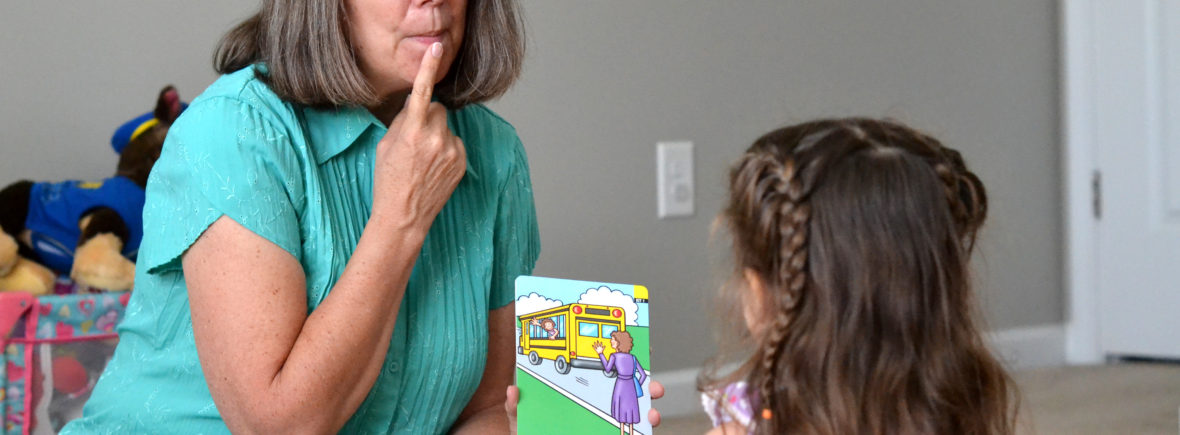Childhood Apraxia Of Speech
Childhood apraxia of speech (CAS) is a motor speech disorder. Children with CAS have problems saying sounds, syllables, and words. This is not because of muscle weakness or paralysis. The brain has problems planning the movement of the body parts (e.g., lips, jaw, tongue) needed for speech. The child knows what he or she wants to say, but his/her brain has difficulty coordinating the muscle movements necessary to say those words. Isolated exercises designed to “strengthen” the oral muscles will not help with speech for individuals with CAS. CAS is a disorder of speech coordination, not strength.
Common Symptoms of Childhood Apraxia of Speech:
In very young children:
- Did not coo or babble as an infant
- First words are late, and they may be missing sounds
- Only a few different consonant and vowel sounds
- Problems combining sounds; may show long pauses between sounds
- Simplifies words by replacing difficult sounds with easier ones or by deleting difficult sounds (although all children do this, the child with apraxia of speech does so more often)
- May have problems eating
In an older child:
- Makes inconsistent sound errors that are not the result of immaturity
- Can understand language much better than he or she can talk
- Has difficulty imitating speech, but imitated speech is more clear than spontaneous speech
- Has more difficulty saying longer words or phrases clearly than saying shorter ones
- Appears to have more difficulty when he or she is anxious
- Is hard to understand, especially for an unfamiliar listener
- May sound choppy, monotonous, or stresses the wrong syllable or word
Treatment for Childhood Apraxia of Speech:
The most effective treatment approaches involve those which include principles of “motor learning” which include a high degree of practice and repetition, correction and feedback, slowed rate, and a focus on targeted motor placement and productions. Increased sensory input for control of the movement sequences and sensory cuing such as visual, tactile, and kinesthetic cuing; touch cuing; verbal cuing are also incorporated. The use of rhythm and melody can also support speech production. Apraxia therapy differs from traditional articulation therapy in that it focuses on speech sequences versus individual sounds.
Many experienced speech-language pathologists use multiple methods and approaches rather than a “one approach fits all” notion, combining some/all the methods mentioned above and using them based on the individual child’s needs.

